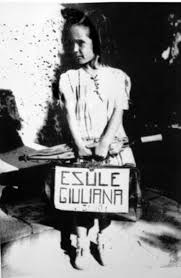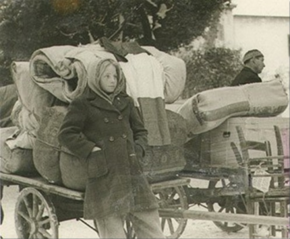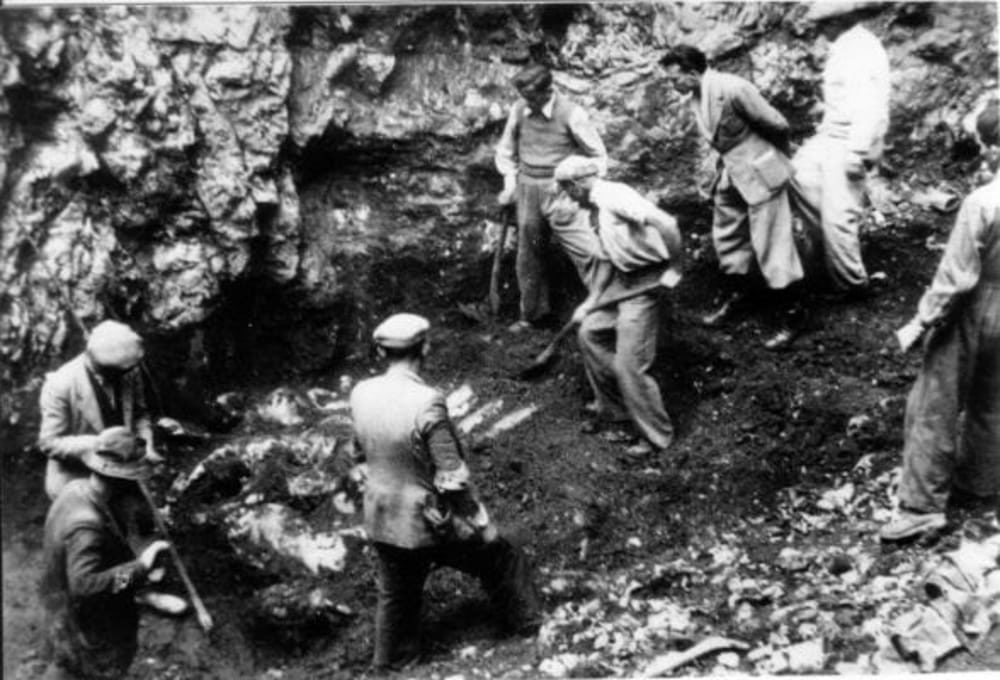Foibe and exiles in Trieste
Since September 1943, the control of increasingly vast territories by the Slavic partisans and above all the rapid disintegration of the Italian army in Venezia Giulia following the Armistice of Cassibile, allowed the first eliminations, especially in Istria, but also in the Trieste karst hinterland, not only of fascist elements, but also of those who potentially could have opposed the pro-communist policy and / or the hegemonic designs on the Venezia Giulia of Marshal Tito (especially Italians, but also Slovenes and Croats). These killings intensified in the following years and reached their apex, in Trieste, with the entry of the Yugoslav army into the city and the control it exercised over the territory for about a month and a half, poorly opposed by the New Zealand contingent of Freyberg. During the entire period of Yugoslav occupation, requisitions, confiscations and arrests of numerous citizens were carried out by the Titoist police, suspected of having little sympathy towards the communist ideology or considered unreliable due to social position, wealth, family origins and nationality. Among these there were above all fascists or collaborationists, but also fighters of the War of liberation, simple workers, victims of personal vendettas and hatreds matured during the war. Most of those arrested never returned to their homes. The Triestines solicited the intervention of the Allies who occasionally expressed formal protests without however obtaining appreciable results. General Gentry, who shared command of the Allied forces present with Freyberg also had a meeting with his Yugoslav counterpart and made him understand that the Allies "[...] could not allow summary arrests to be made or citizens to leave the city without trial. », but all was useless.
The Trieste population had no illusions about the fate of the many who disappeared. The discovery of the first sinkholes in Istria, in the autumn of 1943, the testimonies of the Dalmatian refugees on the tragic fate of many of their fellow citizens in Zadar, in November 1944, suggested the worst. Immediately after the withdrawal of the Yugoslav troops from Trieste, excavations began in the Trieste Karst, which were completed at different times and periods. Three main sinkholes were identified in the vicinity of the city: Basovizza, Monrupino and Sesana (currently in Slovenian territory), and other secondary ones (Opicina, Campagna and Corgnale), with an unspecified number of corpses. It should also be emphasized that not all the disappeared were thrown into the aforementioned sinkholes: a non-quantifiable part of them was deported to other areas of Venezia Giulia, or to Yugoslavia, and there, in all probability, suppressed and buried. The number of victims can only be speculated on. In April 1947 the Allied Military Government had collected 1,492 names of missing persons in Trieste on the basis of reports made by family members, but this number was to be considered provisional. However, definitive data were never provided either in the years or in the following decades. After his return to Trieste in March 1947, one of the leading exponents of Julian communism, Vittorio Vidali, interpreting the break between Stalin, supported by the PCI, and Tito, referred to the "Tito Trotskyists" defining them as "a gang of assassins and spies ”, in 1956, Khrushchev goes to Belgrade and rehabilitates Tito.
Starting from the summer of 1945, the exodus of many Julians and Dalmatians from the areas militarily occupied by the Titoists and which would subsequently be annexed to the Yugoslav state also fully developed. The exodus, which began in a creeping form since September 1943, lasted for fifteen years and involved about 250,000 refugees or perhaps more (mostly of Italian ethnicity, but also Slovenes and Croats) and had Trieste among its privileged destinations. . In fact, the city welcomed a large part of the approximately 65,000 exiles who chose to rebuild their lives in the provinces that would later shape the autonomous region of Friuli-Venezia Giulia. Perfectly inserted into the social reality of Trieste, they themselves have constituted, for the Julian city, a factor of economic and human development. In this regard, it should be remembered that the influx of exiles allowed Trieste to experience, in the decade following the Second World War, an appreciable growth in its population, with a clear (albeit temporary) turnaround compared to the previous period, characterized by a long demographic stagnation in progress since the twenties of the twentieth century.












